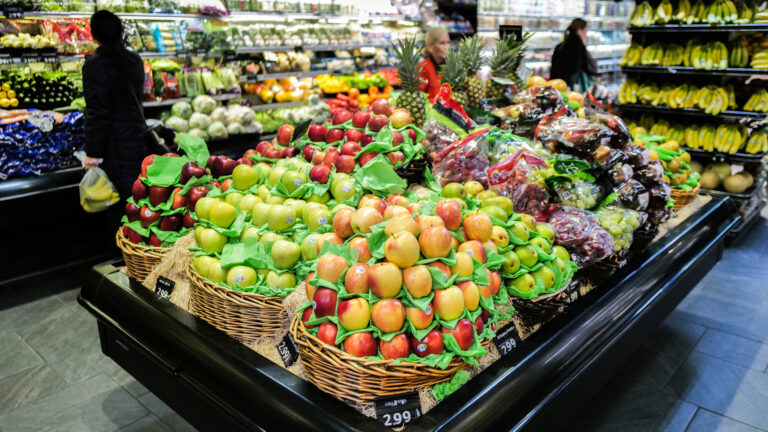How to reduce the risk of eating
A few years ago, while on a road trip, I ordered leftover spaghetti and meatballs during a pitstop at Denny’s. When the plate came out, I thought there was no way I could finish the big platter, but I did because it was right in front of me – even though I knew exactly what was going on. .
As an assistant professor of health policy, I examine the food environment and how we can promote healthy choices. What doesn’t help us make the right choice is the size of the portions sold in restaurants. US portions of packaged and fast food have increased fivefold since some of those items were first introduced, and the proliferation of large portions began 50 years ago.
As my experience at Denny’s shows, people eat and drink what is put in front of them, even more than they intended or wanted. In one study, those who received 50% larger portions ate an average of 400 more calories per day. That’s more calories than two Krispy Kreme donuts. We know that more calories over time means weight gain. Although obesity is a complex problem with many causes, reducing portion sizes is one risk reduction tool that we need to address.
My team and I did a study to show that there is a simple, inexpensive solution to this problem: Restaurants should start giving their reservations in double sizes. Fast food restaurants already offer customers a choice of sizes; sit-down restaurants are starting to do the same. Places like Olive Garden offer lunch versions of their classics, and the Cheesecake Factory offers “SkinnyLicious” options. But many people feel guilty about ordering the “SkinnyLicious” list which is disappointing. There are other options: In one study, my team and I showed participants a list that offered two types of subscriptions. We called the smaller option “standard” and the larger one “large”. For the control group, we did not record the minimum size. Those who saw the “standard” label could choose a smaller size.
Offering both types is a success for diners, public health, and even the restaurant industry. Americans are eating out more than ever before, so for dinner, ordering a small entrée means being protected from the temptation to overeat. If enough people eat fewer calories and less fat and sodium, that will have public health benefits. On the other hand, the restaurant industry can use the method currently used by the major brands of alcoholic beverages and soft drinks. That is, instead of getting more people to buy soda, they offer more sizes of that soda to accommodate events and different types of customers. This strategy has led to increased revenue for the Coca-Cola Company, for example, which introduced the 7.5-oz mini can nationwide in 2010.
As a public health researcher, I prefer that people not drink sugary drinks at all. But that is not a real thing. This method makes it easier to measure. A 7.5-oz can of soda usually means drinking 7.5-oz of soda. Similarly, accepting the 695-calorie Cajun Shrimp & Chicken Pasta at TGI Friday’s would mean consuming, at least, 695 calories, instead of the current 1,390.
Our habits regarding large portions gradually improved over time. It will take time to get us back to the point where a 1,000-calorie entree will meet the hype it deserves.
Another challenge is that consumers see convenience as a way to save money: Why buy 230-calorie fries for $4 when you can pay just $2 to get twice that amount? But the menu boards do not provide the cost of gaining weight. There are physical costs, including an increased risk of heart disease and type 2 diabetes. There are financial costs: Being overweight doubles the cost of health care per person annually, and at the national level, it contributes more than $260 billion in health care costs. There are also personal costs: the difficulty of losing weight once one has gained it, and the consequences for mental health. In our study and others, however, we found that when a reduced size is offered, people choose it even if it costs slightly more per pound of food.
The good thing about focusing on portion sizes is that it’s not about fasting, it’s about reducing risk. You don’t have to skip the fettuccine alfredo or the delicious jambalaya altogether. If restaurants offer 1,000+ calorie items in small portions, diners can still eat what they want without sacrificing their health. By doing so, restaurants can experience a welcome miracle: By giving their customers the option to eat less, more people can show up at the table.
Sophia Hua is an assistant professor of health policy at the University of Pennsylvania. For more than a decade, he has researched ways we can change the food environment to make the healthy choice the easy choice.
#reduce #risk #eating
